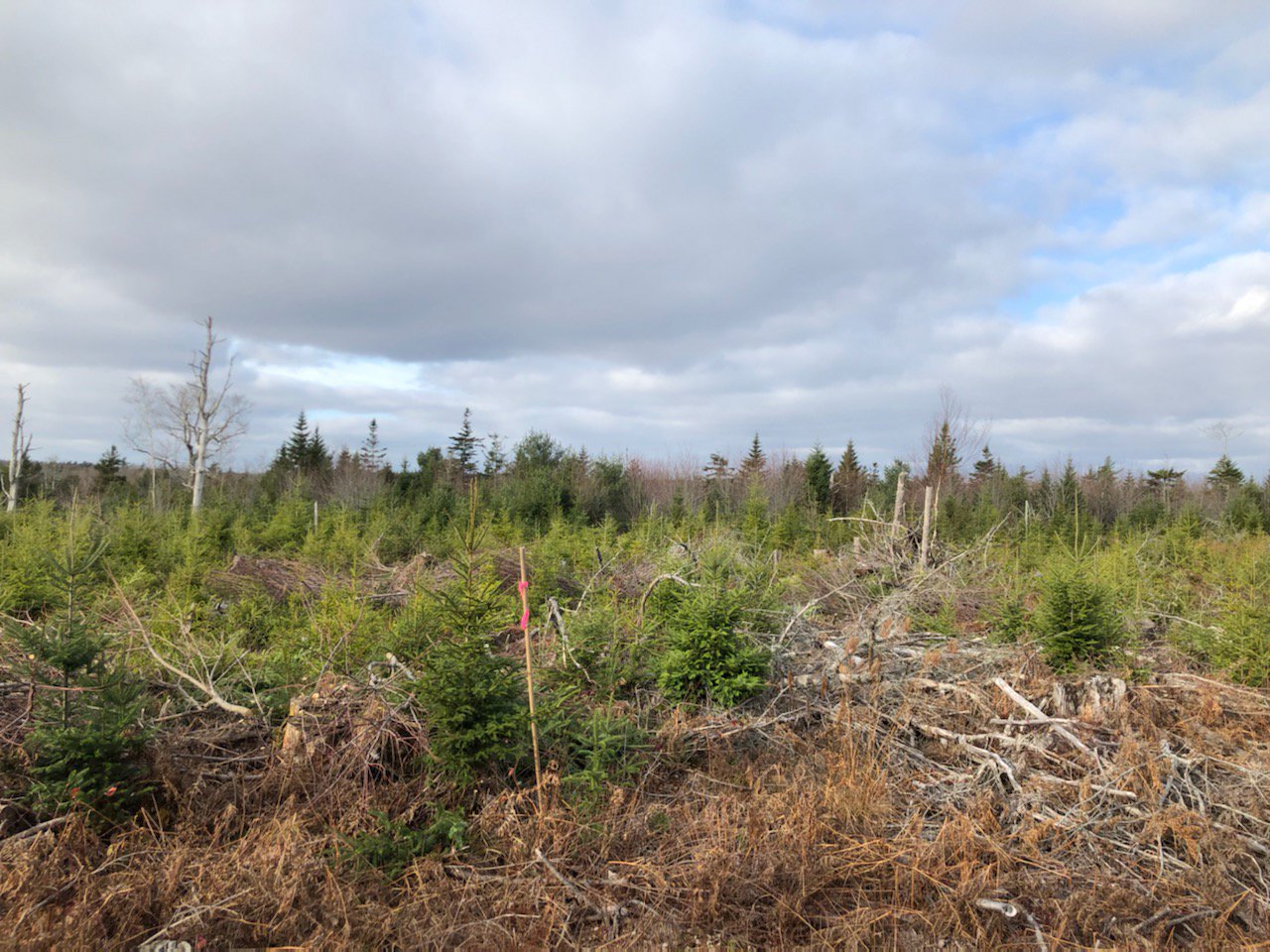Harvesting & Silviculture Treatments
There are a variety of harvesting and silvicultural treatments that can be performed on a forested stand to achieve a range of forest management goals. Many different variable, and forest characteristics are used to determine appropriate treatment for a stand.
Some of these characteristics include including; species composition, development stage, and ecological characteristics such as soil type and natural disturbance regime. These treatments are generally divided into two categories; regenerating and tending treatments, which are described below.
This information is provided from Nova Scotia’s Forest Management Guide https://novascotia.ca/natr/forestry/programs/timberman/pdf/FMG.pdf
Regenerating Treatments
Source: WWSC
Selection Management
Unlike clear-cut and shelterwood systems, selection harvesting is a type of uneven-aged management which involves continuous, small-scale cuts which never completely removes the canopy. The purpose of a selection system is to remove poor quality trees (both immature and mature) while enhancing the growth of the remaining trees and creating space for new trees to establish. Selection harvesting can be considered both a tending treatment, and a regeneration treatment depending on the condition of the forest.
Different types of selection harvesting exist, such as individual and group selection, and can be done in conjunction. Through this type of harvest treatment, diverse mixtures of species and development stages can be maintained in a forest stand. This can also generate continuous, long-term harvest opportunities.
Source: WWSC
Overstory Removal
Overstory removal is an even-aged, regenerating method of harvest which involves the complete (or near complete) removal of all overstory trees on a forested site if regeneration is sufficient or not. It is usually followed by planting if the site is not adequately stocked with regeneration after two growing seasons. Following ecological forestry objectives, overstory removal is only suitable in forest types that are subject to large-scale stand replacing disturbances such as fire.
Source: WWSC
Uniform Shelterwood
Shelterwoods are another form of even-aged, regenerating-aimed harvest which involves the periodic removal of overstory trees over time. Shelterwood harvests are typically completed in two or three cuts of approximately 30-40% removal during each entry over a period of 5-20 years; this prolonged regeneration period allows for the regeneration of desired tree species in the understory and reduces the amount of competition. As opposed to a clear-cut, shelterwood harvests are typically done in stands which contain at least 30% long-lived species which are adapted to grow in partial shade.
Irregular Shelterwood
Irregular shelterwood is a mixture of selection harvesting, and a traditional shelterwood harvest, meaning that, shade is used to naturally regenerate stands, although the overstory is kept longer than it would in a traditional shelterwood. Because the overstory is left for a longer time, more than one age class is created, resulting in a multi-aged canopy.
Source: http://forestsformainesfuture.squarespace.com/fresh-from-the-woods-journal/the-white-pine-enduring-symbol-of-the-maine-woods.html
Seed Tree
Similar to the shelterwood method, the seed tree method is used to regenerate a forest stand naturally, using existing seed sources on site. This harvest method involves the removal of the majority of the forest canopy, while leaving a few high-quality trees scattered throughout the stand to serve as a seed source for the new stand to regenerate. The seed trees left on-site should be vigorous, wind-firm and healthy, and are typically (but not always) harvested once regeneration is adequately established.
Source: WWSC
Planting
Planting refers to the establishment of desired regeneration in sites to ensure adequate stocking of preferred trees. Planting can be done on a recently cleared, full site (full planting) or can be done in smaller gaps or understocked sections of a stand (fill planting).
Fill Planting
Fill planting is the establishment of desired tree species in gaps or in areas that have poorly distributed or understocked regeneration. The tree species chosen to be planted should be suited to the forest site.
Full Planting
As opposed to fill planting, full planting is the establishment of full tree cover in areas that have been completely cleared. This is typically the treatment following an overstory removal with insufficient stocking of regeneration.
Tending Treatments
Source: WWSC
Pre-Commercial Thinning
Pre-commercial thinning (PCT) is a stand tending treatment which is designed to decrease stem density and, in turn, increase the growing space of desired trees in an immature forest, while removing undesirable competition from the stand. Because the wood removed is unmerchantable, there is no immediate economic gain from doing a PCT. However, this tending practice increases growth and yield of retained trees, promotes root development, and creates uniform piece size for the next thinning entry, which is referred to as commercial thinning. This treatment can lead to many long-term benefits such as increased quality and value of trees and improved stand condition overall.
Source: WWSC
Commercial Thinning
Commercial thinning is another type of stand improvement treatment that, like a PCT, is designed to increase the growing space for desired trees, while removing lower-quality, less desirable trees in the stand. Unlike a PCT, however, commercial thinnings are done in mature stands, which have reached a point where too many trees are competing for the same light and nutrients and beginning to decline because of competition. Funding is available through ASF for this type of treatment.
Source: WWSC
Crop Tree Release
Crop tree release is another tending-aimed method which involves non-uniform thinning (as compared to commercial thinning) used to improve the quality of individual trees in a forest stand. The purpose of this treatment is to improve the growing condition of select, desirable trees by removing less-desirable trees which may be impeding the growth of crop trees. This method is usually applied in stands or forested areas where the good quality and form trees (the crop trees) are scattered over the stand. Over time, with repeated entries of crop tree release, this treatment improves the health, quality and value of crop trees.
Source: WWSC
Crop Tree Pruning
Crop tree pruning is a treatment used to increase the health, value and quality of individual trees by removing lower limbs. This treatment is typically aimed for species that have a high economic return on high-quality lumber and veneer, such as white pine or high-value tolerant hardwood.
Early Competition Control (Weeding)
Early competition control (weeding) is a type of tending treatment that is done in young, regenerating stands in order to remove undesirable species in order to promote the growth of more desirable trees in a stand.










